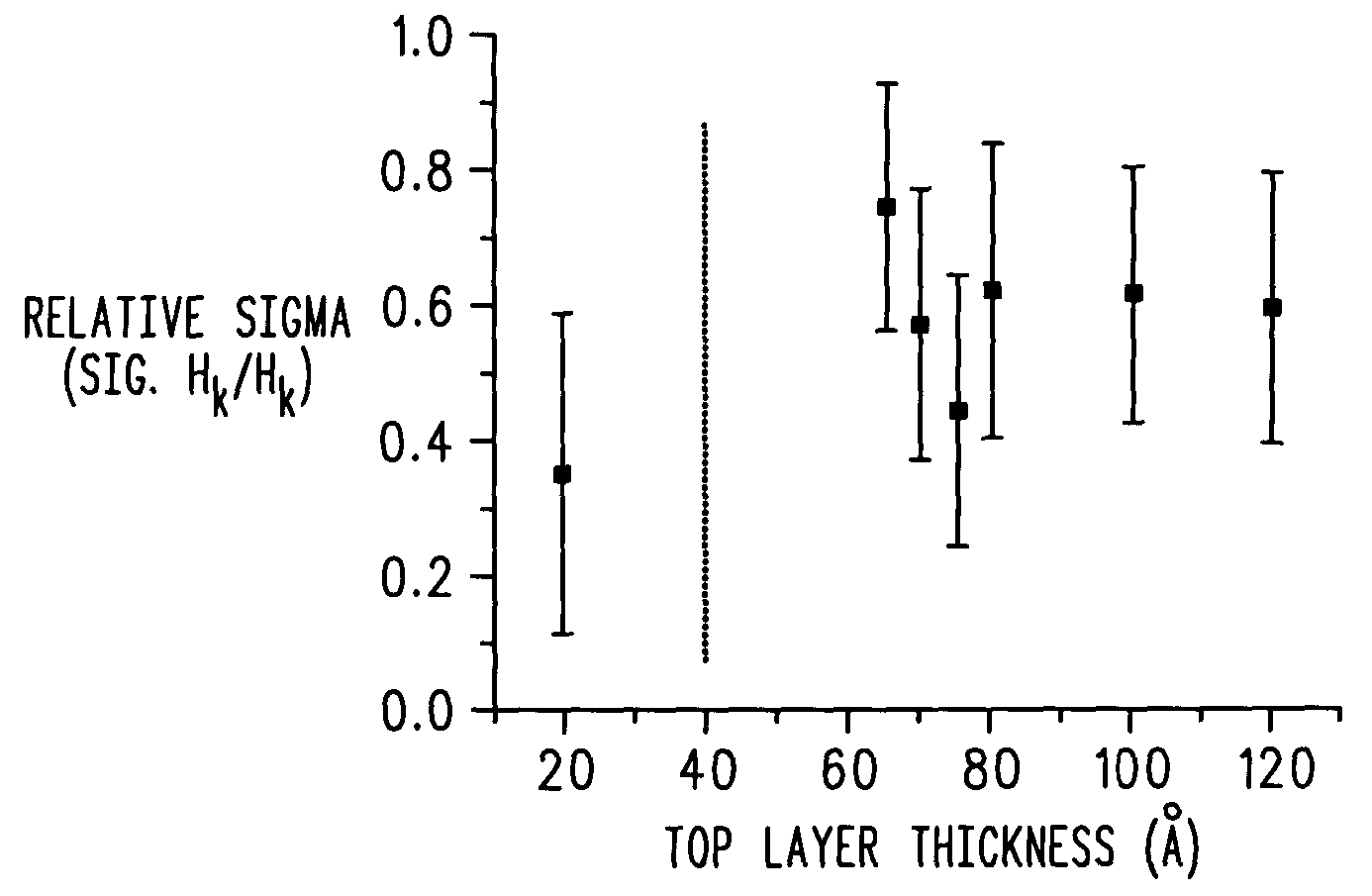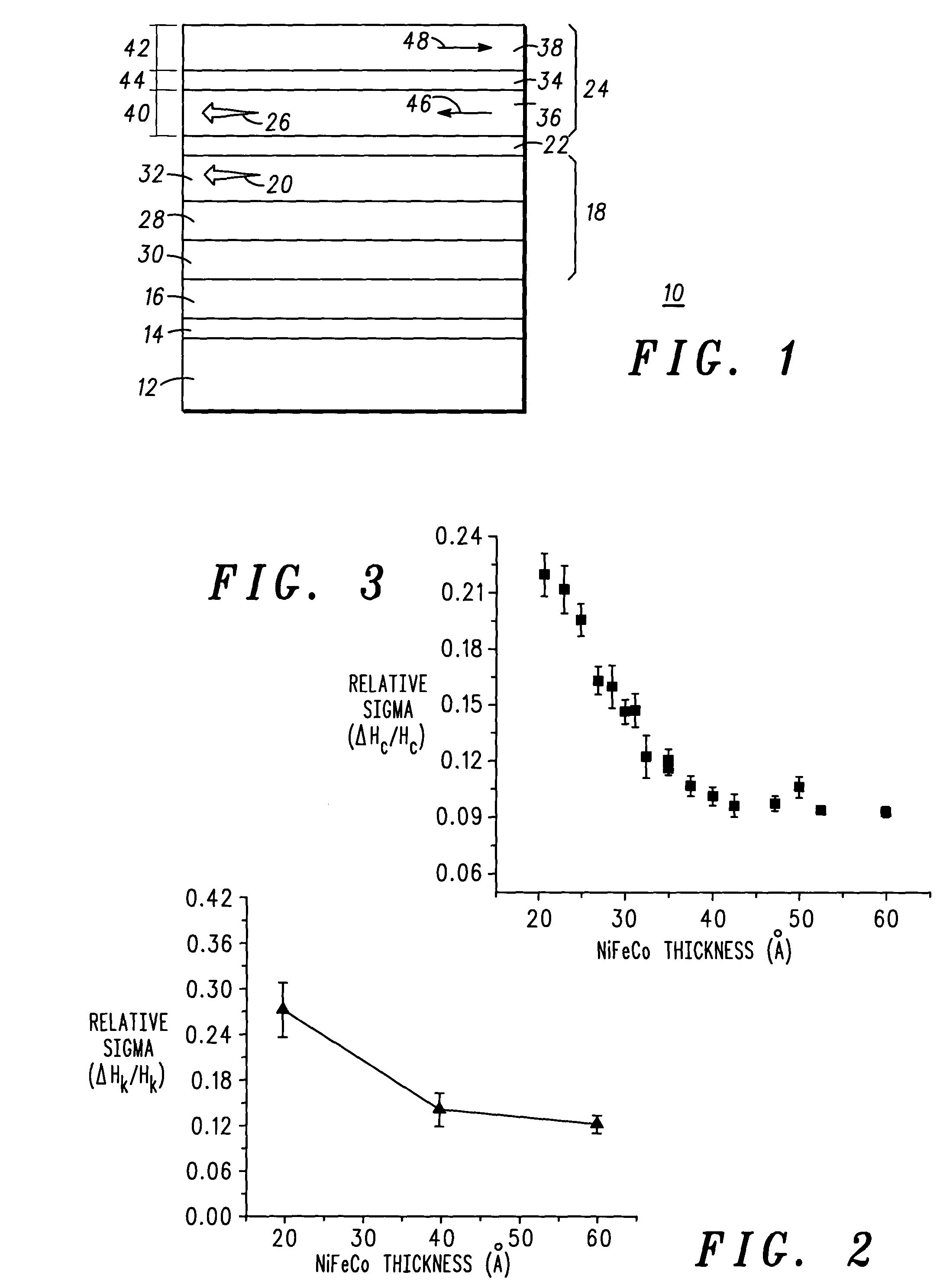Magnetoresistive random access memory with reduced switching field variation
a random access memory and switching field technology, applied in the field of magnetic memory devices, can solve the problems of high density of dram, high read and write speed, volatile and large cell area
- Summary
- Abstract
- Description
- Claims
- Application Information
AI Technical Summary
Benefits of technology
Problems solved by technology
Method used
Image
Examples
Embodiment Construction
[0013]Turn now to FIG. 1, which illustrates a simplified sectional view of a scalable magnetoresistive tunneling junction memory cell 10 in accordance with the present invention. The scalable magnetoresistive tunneling junction memory cell 10 includes a supporting substrate 12 onto which a seed layer 14 is positioned. Supporting substrate 12 may be, for example, a semiconductor substrate or wafer and semiconductor control devices may then be formed thereon. Seed layer 14 is formed on supporting substrate 12 to aid in the formation and operation of the remaining layers of material. An anti-ferromagnetic layer 16 is then positioned on seed layer 14 and includes, for example, alloys of manganese (Mn) and one of Ni, Fe, Pt, Rh or combinations thereof. It will be understood that seed layer 14 is optional and is included in this preferred embodiment for illustrative purposes. Also, the positioning of anti-ferromagnetic layer 16 is for fabrication convenience with many other possible confi...
PUM
| Property | Measurement | Unit |
|---|---|---|
| width | aaaaa | aaaaa |
| aspect ratio | aaaaa | aaaaa |
| magnetic | aaaaa | aaaaa |
Abstract
Description
Claims
Application Information
 Login to View More
Login to View More - R&D
- Intellectual Property
- Life Sciences
- Materials
- Tech Scout
- Unparalleled Data Quality
- Higher Quality Content
- 60% Fewer Hallucinations
Browse by: Latest US Patents, China's latest patents, Technical Efficacy Thesaurus, Application Domain, Technology Topic, Popular Technical Reports.
© 2025 PatSnap. All rights reserved.Legal|Privacy policy|Modern Slavery Act Transparency Statement|Sitemap|About US| Contact US: help@patsnap.com



